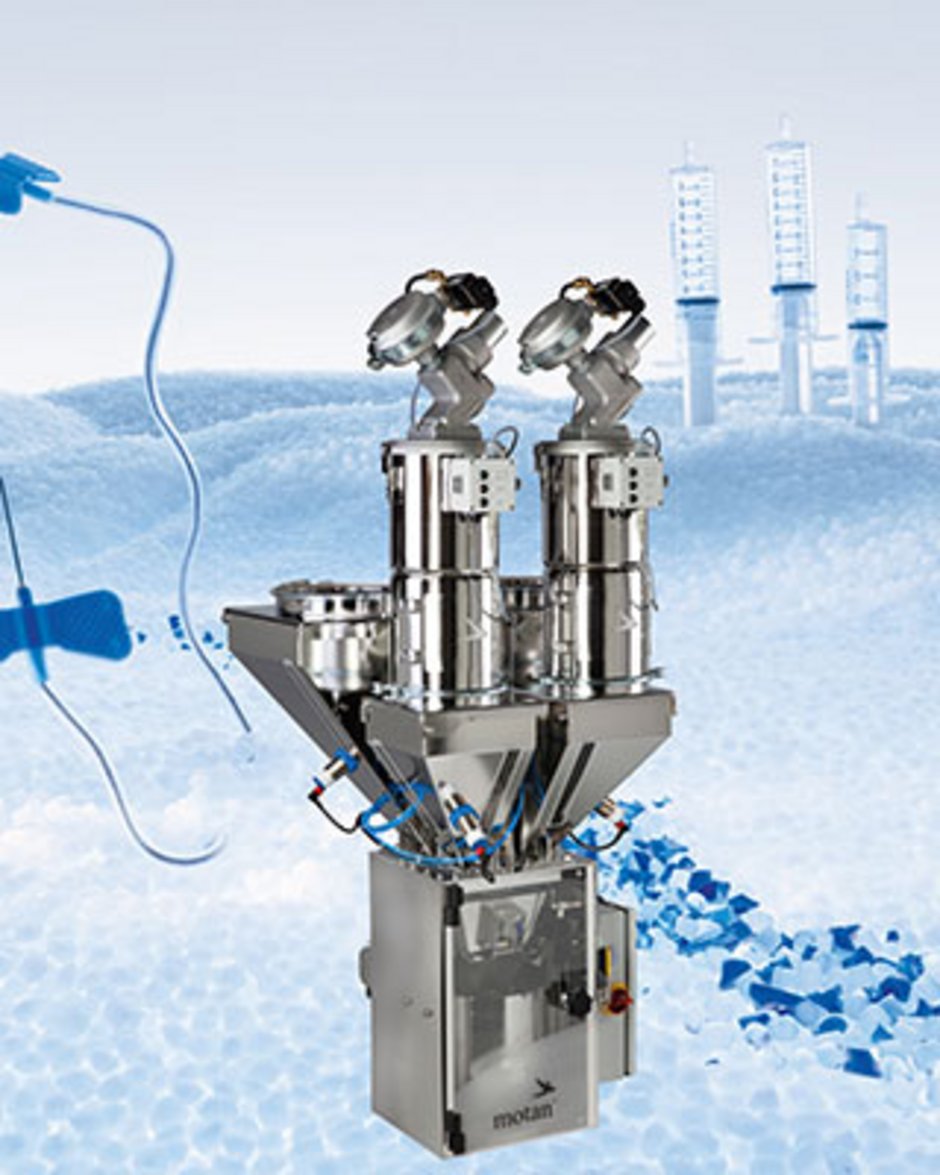12 - Dosing technology sum-up

Dosing units meter materials at a defined point in time in a defined ratio. To do this, the dosing device draws material out of the supply hopper, and transfers it to the downstream equipment. The mass (not the volume) of the ingredients is the defining parameter for dosing precision and recipe compliance. Overall results, however, also depend on the type of material and its properties, the dosing method and the dosing device. When choosing a dosing device, it is important to consider the material (granulate, powder, etc.) and its flow properties, whether the components should be metered synchronously or asynchronously, and the throughput required. Dosing devices are available in many forms, including screws, slide-gate valves, disc dosing elements, and rotary valves. In addition, there are two dosing methods: volumetric and gravimetric.
Volumetric dosing
Volumetric dosing units meter components based on volume, meaning they must be calibrated. They can operate synchronously or asynchronously. Asynchronous dosing units meter components independent of the downstream equipment, and must be actively mixed. Synchronous dosing units meter all components simultaneously, with the dosing cycle synchronized with the material feed on the downstream production equipment. When this method is used, mechanical mixing is usually not necessary.
Both types of volumetric dosing can be used to meter all components or all components except one “unmetered” main component. When the former method is used, all materials for a recipe are fed to a mixer or a reservoir from their respective dosing modules. The control system for the dosing unit can run independently and does not need to be integrated with the downstream equipment. In the latter method, the main component is fed into a mixer or reservoir unmetered, while all the other additives are metered.
Gravimetric dosing
Gravimetric dosing units weigh the material, so they do not need to be calibrated. Two methods can be used: “gain-in-weight” and “loss-in-weight”. Gain-in-weight systems meter the components one after the other, and their aggregate weight is measured. Loss-in-weight systems measure the decrease in mass of the ingredients remaining in the supply hopper. Each dosing station is fitted with a load cell. As the material is dosed, the load cells measure the difference in weight per unit of time. All components are dosed synchronously. Under real-life conditions, many factors can influence dosing precision and the overall results. This is why it is important to consider the environmental conditions when choosing a dosing system. The input material and its properties should also be taken into account to ensure good mixing results. For example, materials with very disparate bulk densities can segregate.
It is difficult to imagine gravimetric and volumetric dosing units in practice? Find more information on www.motan.com
Starting with the next installment, mo will explain the ins and outs of drying technologies.
